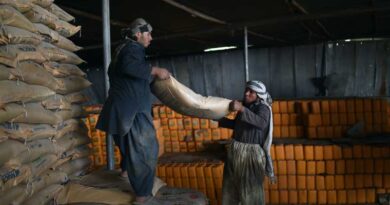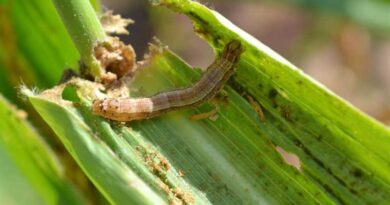Afghanistan – to avert a catastrophe, agricultural assistance is urgently needed
20 November 2021, Rome: As the Afghan people confront widespread drought, the collapse of rural livelihoods and widespread economic upheaval, the Food and Agriculture Organization of the United Nations (FAO) is providing critical life-saving assistance to farmers and herders, while urging far greater and immediate support for agricultural production.
In Afghanistan today at least 18.8 million people are facing acute food insecurity – meaning they are unable to feed themselves on a daily basis – and that number is projected to rise to 22.8 million people by the end of 2021. FAO is supporting farmers and herders with seeds, fertilizer, cash and livelihood support to keep agricultural production going and to avoid widespread livelihood collapse in several parts of the country.
“We need to help Afghanistan avoid a hunger trap. Millions of Afghans are living on the edge of catastrophe – which will occur if their animals die or fields go unplanted,” said FAO Director-General, QU Dongyu.
“Urgent investment in agriculture and livestock production is needed now, and it helps donors to save money down the road by putting the country back on track to food security.”
A wheat cultivation assistance package costing $157 enables a farm family to meet its cereal needs for a year, compared with $1 080 required to cover the minimum food needs of an average family, something that few can afford to do right now.
Agriculture is the backbone of Afghan livelihoods and critical for Afghanistan’s economy. Around 70 percent of Afghans live in rural areas and agriculture accounts for at least 25 percent of GDP while an estimated 80 percent of all livelihoods depend directly or indirectly on agriculture.
FAO urgently needs $115 million to reach five million men, women and children this winter and next spring. Of this amount, one out of every five dollars will directly support Afghan women. An additional $85 million is required in 2022 to fund FAO’s humanitarian response to prevent livelihood collapse and widespread displacement.
Seed distribution a lifeline for farmers
FAO is currently distributing wheat cultivation packages for Afghanistan’s winter wheat season across 31 out of 34 provinces of the country. They include high quality and locally-supplied certified wheat seeds and technical training to ensure the best possible results for farmers.
This campaign is reaching out to 1.3 million people to keep their livelihoods going in the coming weeks and months, as FAO steps up its humanitarian support to farmers in the large rural areas of the country where the majority of Afghans live.
“If we didn’t get this bag of certified wheat seeds, we wouldn’t be able to cultivate wheat this year. These improved wheat seeds will grow a much better yield,” said Esmatullah Mirzada, a farmer from Safar Khan village, in Zendajan district of Herat Province, who recently received seeds and training from FAO.
But the lean season before the harvest will be harsh and much more needs to be done to feed rural families and ensure their survival, that means protecting their livestock to keep their valuable animals alive, healthy and productive.
“Afghan farmers need to be growing food again for their families and for Afghanistan and they need cash in their pockets. Agriculture can’t wait and the people of Afghanistan can’t wait,” said Richard Trenchard, FAO Representative in Afghanistan.
Consequences of inaction: rural displacement
Trenchard has just returned from a field visit to drought-ravaged areas in Zendajan district, in Herat province. He also met Internally Displaced People (IDP) living on the outskirts of the city of Herat. They were farmers from Ghor, a nearby province, and had left their rural land in despair.
“The situation is disastrous. Every farmer we’ve spoken to has lost almost all of their crops this year, many were forced to sell their livestock, they have accumulated enormous debts and simply have no money,” Trenchard said.
“No farmer wants to leave their land. But when you have no food, you have no grain from the previous harvest, there are no seeds in the fields and your livestock are gone, you have no choice.”
Helalading Najmadin, a farmer from Qalae rig village, Zendajan district, said: “Drought, COVID-19 and armed conflict have brought us to this terrible situation. In our village people don’t even have bread to eat.”
“Our properties and livestock have been destroyed, and due to the lack of improved seeds, fertilizers and water we couldn’t harvest any wheat,” he added.
The widespread drought looks set to worsen in Afghanistan. Farmers and herders are likely to face a second consecutive year of drought in 2022, with La Niña expected to bring drier than normal conditions to Afghanistan in the coming months. This situation will create a very real famine risk in 2022 unless immediate large-scale support to protect these people and their livelihoods arrives very soon.
While humanitarian access has never been better, prices are soaring and needs continue to outpace the resources provided.
With FAO assistance, the provision of animal feed, deworming and other services can keep up to 8.4 million livestock fed and productive, maintain household dairy production and support related income by $35 per week.
Cash for work, targeting the most vulnerable including the landless, provides lifesaving cash in rural areas during the lean period, while improving access to water during drought through the rehabilitation of water catchments, irrigation, livestock watering points and kareez (underground canal systems).















